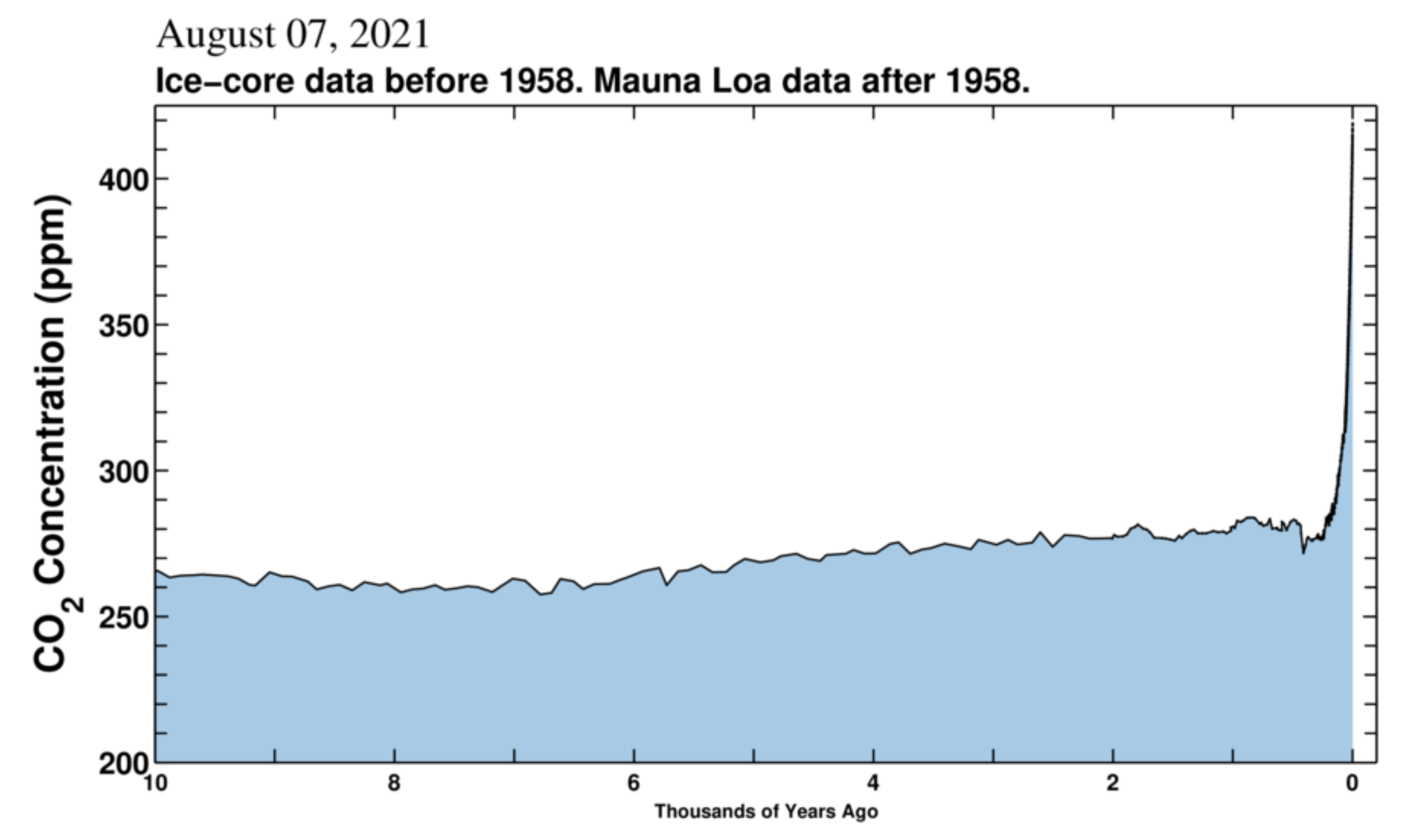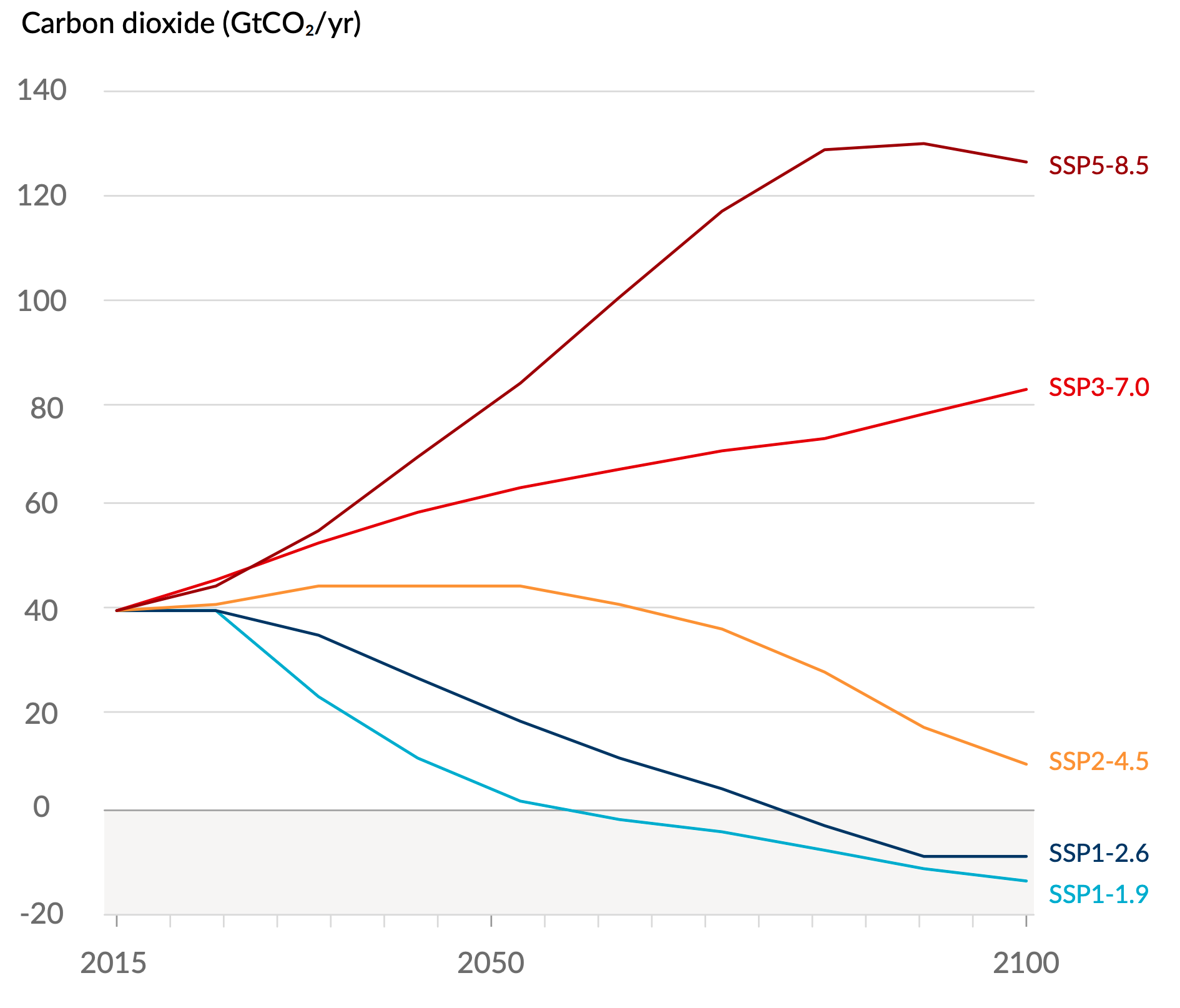Key takeaways from the new IPCC climate report
On August 9th, 2021, an important new United Nations scientific report on climate change was published. It begins by stating that "it is unequivocal that human influence has warmed the atmosphere, ocean and land. Widespread and rapid changes in the atmosphere, ocean, cryosphere and biosphere have occurred".
The fact that humans are responsible for global warming comes as no surprise to most people, but it's important to have it stated in black and white by the U.N. The report also strengthened worries about the future and to some extent caused outrage among vulnerable countries, whose leaders demanded swift actions from the rest of the world to immediately reduce emissions and to help fund preparations for the future.
A key data point that keeps coming up in climate science is the global atmospheric CO2 concentration, which according to the report is currently above 410 parts per million (ppm). As can be seen from the Keeling Curve below, for thousands of years the level was between 260 and 280 ppm, but quickly shot up to around 400 ppm during the second half of the 20th century.

As long as we keep burning fossil fuels and thus adding CO2 to the air, the atmospheric CO2 concentration will go up. For a long time the IPCC has maintained that 450 ppm is a critical number to keep in mind, because emissions scenarios where CO2 concentrations don’t exceed 450 ppm are likely to maintain warming below 2°C over the 21st century relative to pre-industrial levels.
In other words, if the world crosses the 450 ppm threshold, ecosystems worldwide are likely to suffer serious damage. It's easy to calculate that if we don't change anything, we only have about 3,200 days until we reach the threshold. That’s just about nine years!
The report, specifically the Working Group I contribution (the physical science basis) to the Sixth Assessment Report (AR6) of the Intergovernmental Panel on Climate Change (IPCC), highlights several other interesting and, unfortunately, mostly alarming issues. What follows is a brief summary of the headline statements from the Summary for Policymakers:
The current state
- “The scale of recent changes across the climate system as a whole and the present state of many aspects of the climate system are unprecedented over many centuries to many thousands of years.”
- “Human-induced climate change is already affecting many weather and climate extremes in every region across the globe.”
Possible climate futures
- “Global surface temperature will continue to increase until at least the mid-century under all emissions scenarios considered. Global warming of 1.5°C and 2°C will be exceeded during the 21st century unless deep reductions in carbon dioxide (CO2) and other greenhouse gas emissions occur in the coming decades.”
- “Many changes in the climate system become larger in direct relation to increasing global warming. They include increases in the frequency and intensity of hot extremes, marine heatwaves, and heavy precipitation, agricultural and ecological droughts in some regions, and proportion of intense tropical cyclones, as well as reductions in Arctic sea ice, snow cover and permafrost.”
- “Many changes due to past and future greenhouse gas emissions are irreversible for centuries to millennia, especially changes in the ocean, ice sheets and global sea level.”

Risk assessment and regional adaptation
- “With further global warming, every region is projected to increasingly experience concurrent and multiple changes in climatic impact-drivers. Changes in several climatic impact-drivers would be more widespread at 2°C compared to 1.5°C global warming and even more widespread and/or pronounced for higher warming levels.”
Limiting future climate change
- “From a physical science perspective, limiting human-induced global warming to a specific level requires limiting cumulative CO2 emissions, reaching at least net zero CO2 emissions, along with strong reductions in other greenhouse gas emissions.”
- “Strong, rapid and sustained reductions in CH4 [Methane] emissions would also limit the warming effect resulting from declining aerosol pollution and would improve air quality.”
- Scenarios with low or very low greenhouse gas (GHG) emissions (SSP1-1.9 and SSP1-2.6) lead within years to discernible effects on greenhouse gas and aerosol concentrations, and air quality, relative to high and very high GHG emissions scenarios (SSP3-7.0 or SSP5-8.5)
Conclusion
The new IPCC climate report is important for many reasons but the New York Times pointed out two key points. First, the report, which is approved by 195 governments and based on more than 14,000 studies, represents the most comprehensive summary to date of the physical science of climate change. Second, the report will be in the center when diplomats gather in November at a U.N. summit in Glasgow (COP26) to discuss how to step up their efforts to reduce emissions.
Despite all the alarming facts, there are some optimistic tones in the report as well. If we can orchestrate a coordinated global effort to stop adding CO2 to the atmosphere by 2055 (as illustrated by the optimistic scenario SSP1-1.9), global warming would likely halt and level off at around 1.5°C. That would require moving away from fossil fuels starting immediately, as well as removing large amounts of carbon from the atmosphere.
We believe that he financial services sector is absolutely critical for enabling us to reach the targets set by the Paris Agreement. The simple truth is that money talks, and when financial institutions cease to fund or insure polluting businesses, major changes can be achieved.
It's worth noting that the AR6 is still missing contributions from two other groups, i.e. Working Group II (Impacts, Adaptation and Vulnerability) and Working Group III (Mitigation of climate change). Originally all three deliverables were scheduled to be approved and published before COP26, but unfortunately, reports II and III (and the Synthesis Report) have been postponed to 2022.
Needless to say it would’ve been extremely beneficial if policymakers would have had access to the entire AR6 before COP26 – but it’s critical that at least this essential part was now published.

